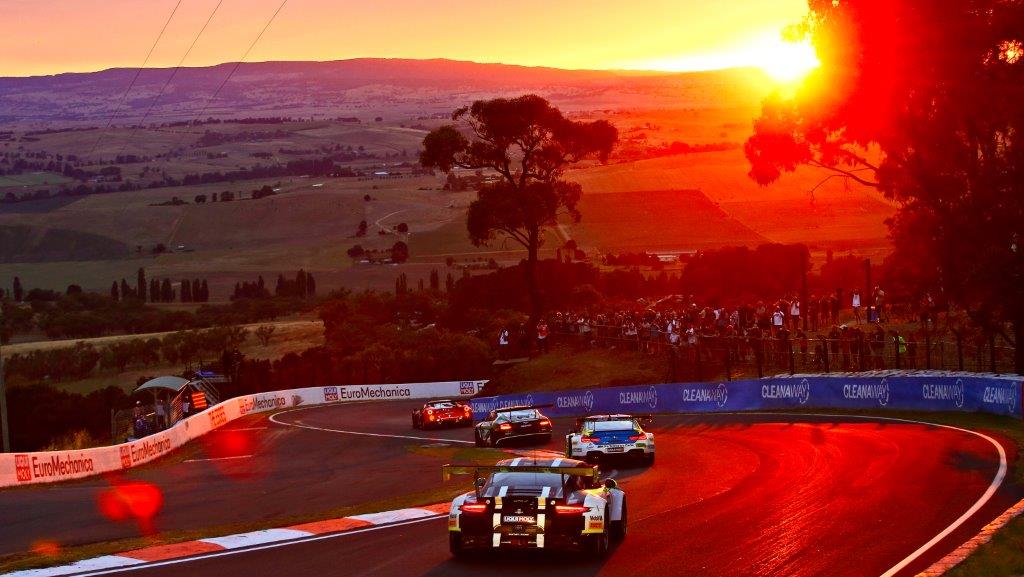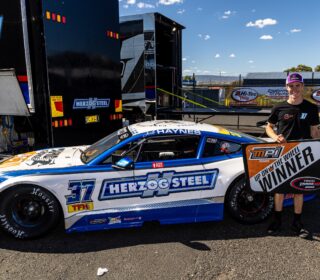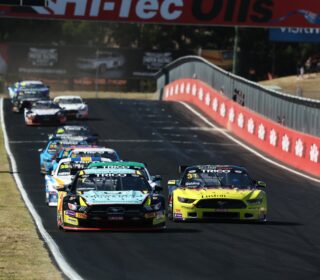CRAILL: Is GT3 the answer?

VOLVO’s unprecedented ditching of their V8 Supercar program last year once again created a robust discussion about the future direction of the regulations utilised by Australia’s top racing category.
And when I mean ‘robust’ I of course mean 15% robust and 85% reactionary, emotional, naysayer rubbish.. but that’s social media for you, isn’t it?
While discussions about ‘consumer relevance versus entertainment’ were bashed over people’s heads on Facebook, the underlying thought by many was ‘Should GT3 replace the current regulations?’
This may surprise some, but I don’t think so.
I will admit that there is significant appeal to the thought of Australia’s top racing teams all running GT3 machinery for 16 race meetings a year in Australia and New Zealand. Imagine, Shane van Gisbergen in a Triple Eight McLaren, or Garth Tander and James Courtney trading paint in a pair of Walkinshaw Porsche’s – and that’s before we get to a factory-backed Nissan team of four GTRs.
But I’ve been around the cars for years now – I was PR for the Bathurst 12 Hour when we introduced GT3 cars into the race in 2011 (which, by the way, a lot of people said was a mistake. Huh.) so, without sounding like I’m blowing smoke up my own backside, I feel like I’ve been part of the education process for Aussie fans.
And unquestionably, the cars are extremely popular relative to pretty much anything else in the sport here, save Supercars.
Yet why do 40,000 people go the 12 Hour when 200,000 go to the 1000?
And if we had GT3 cars in the 1000, would that mean 300,000 people would go instead? I don’t think so.
If people want GT3 cars to be part of their lives so desperately, the product is there, right now, for them to embrace in big numbers should they wish – often at cheaper prices than attending a major Supercars event.
And yet, as sensational as it is, only a couple of thousand people will attend the Phillip Island 101 GT3 race in a few weeks time despite the fact a plethora of top V8 names (and teams) will be racing there.
My point is this: If the vast, overarching majority of Australian motorsport fans wanted GT3 cars as the premier formula they would have started going to GT rounds and stopped going to Supercar rounds.
Yet, they haven’t.
That’s because I don’t think today’s ‘average’ motorsport fan cares as much about the actual cars racing in front of them as perhaps we think they do – or how they used to. If Craig Lowndes left Triple Eight tomorrow to go and drive for a new Supercar team run by Chinese manufacturer Great Wall, I doubt he’d lose fans because of it. Shane van Gisbergen is the same story. And Scott McLaughlin..
Top-flight motorsport is now as much, if not more, about the drivers and the product as it is about the cars. NASCAR is the ultimate proof of that: I bet Toyota get more interest in their products because of Kyle Bush’s antics, rather than for the V8-powered Camry-shaped car he drives.
And before you say anything yes, I know Volvo – well, Polestar – have stated that the technology in Supercars doesn’t suit their future direction. That’s fine. You’ll get some and you’ll loose some.
But Toyota don’t sponsor the Adelaide Crows because the Footy players run around the Adelaide Oval driving 22 identical Corollas: They sponsor them because of the marketing impact they can make through the sport and because they’re a team of champions who were terrific last yea… err.. I digress. Anyway, Supercars is the same thing.
There is a place for the hardcore purist fans to go and see hardcore, purist racing. I, for instance, love nothing more than a good Sports Sedan race where quite literally, anything goes. But I’ll only be watching with a few thousand people at best.
What Supercars and their superstars need is a new, low-cost formula of cars that look awesome, sound sensational, are relatively quick and are good to drive but most importantly, produce great racing.
It needs to be a formula that can attract manufacturers but doesn’t rely on it to succeed.
The general fan doesn’t care if they cost $500,000 or $100,000 – as long as Scotty McLaughlin and Jamie Whincup can bang doors on the final lap of a race, I bet you a million dollars that they’ll still go home going ‘how good was that!’ before instantly buying tickets to the next race.
Five per cent of them won’t like it. Those people will go home thinking ‘I’m annoyed that car wasn’t based on the road-going Commodore and that it wasn’t once a road car and that (insert generic comment that should be from the 1970s here). But my response to them would be, ‘tough’.
The world we live in these days is geared towards entertainment and putting on an exciting and competitive show. There’s a reason so many watch and go to Big Bash games and why crowds are flocking to the AFL in record numbers thanks to the free-flowing, high scoring, entertaining footy being played by the Adelaide Crow.. err.. the league this year.
If GT3 was the answer to domestic touring car racing’s ‘problem’, I reckon the BTCC and DTM would already be there. But they’re not.
GT3 has its place as a predominantly Pro/Am formula for longer races, and the purists love it – and if the cool cars involved bring in new fans then that’s all the better. It has its place, it’s wonderful and it’s great to see it thriving here and all around the world.
But to finish my admittedly flimsy cricketing analogy, GT3 is test match cricket. Some events get great crowds and great TV, but on the whole it’s not the most popular form of the sport.
Supercars, on the other hand, are the Big Bash. Plenty of people go, it rates well and the commercial dollars are tipped into it.
Our current product has resulted is the best Touring Car category on the planet. There’s more depth in competition than in the WTCC, the cars are better than in the BTCC and the racing is better than in the DTM. A smart set of cost effective and racing-driven rules for the future can only enhance and improve this position.
Supercars and GT3 both have their place, and both are brilliant. Why can’t we have both?
WORDS: Richard Craill
IMAGE: Porsche Motorsport







